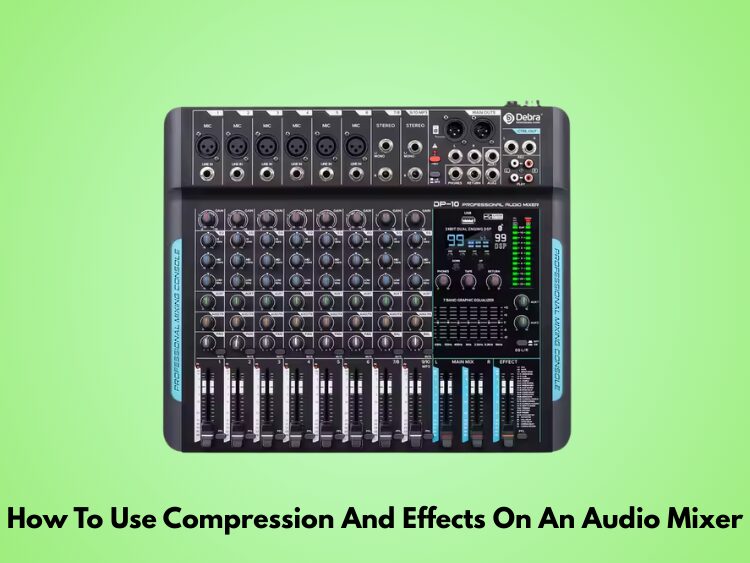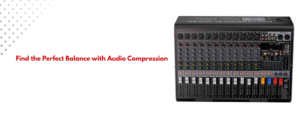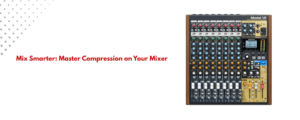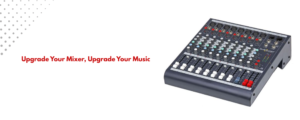Whether you’re working with live sound or records in the studio, learning how to use the audio mixer‘s compression and effects can make a rough mix sound great. These tools help you control the volume, make your sound clearer, and give it more depth or texture. Let’s look at how each one works and how to best use them.
Understanding Audio Compression
Compression lowers the dynamic range of audio signals, which means it makes the difference between the signal’s loudest and quietest parts smaller. This is especially helpful for live shows where the volume can change quickly and cause issues. When a sound goes over a certain level, the compressor lowers its volume by a certain amount, which makes loud sounds less loud. The signal stops being compressed when it falls below the level. This makes the sound output better and easier to control.
Controls for Basic Compression:
- Threshold: When the noise level hits a certain point, compression begins.
- Ratio: How much less of a signal there is once it goes over the threshold. For example, 4:1 means that for every 4 dB over, only 1 dB gets through.
- Attack: The speed at which the compressor starts working after the barrier is crossed.
- Release: It controls how quickly the compressor stops working when the signal falls below a certain level.
- Make-up Gain: This is what you use to get the signal back up to a level that you can use.
If you’re exploring mixers with advanced built-in compression, our list of essential features to look for in an audio mixer might help you find the right model.
When to Use Compression:
- Vocals: To keep the sound level steady during shows.
- Drums: To keep spikes under control and make sure sounds are even and strong.
- Bass: So that low-end sounds don’t get too loud.
Do not over-compress your mix; it can make it sound flat and lose its natural rhythms.
How to Use Compression on a Sound Mixer
A lot of analog and digital mixes have compressors built into some channels. One simple one-knob compressor might be built into each channel of a mixer, especially for singing or drums.
How to Use Compression:
- Set a fair level, like -10 dB.
- For the voices, pick a number that is in the middle, like 3:1 or 4:1.
- Change the hit and release times to fit the instrument (slow for singing, fast for drums).
- To get back any volume that was lost when you compressed, use make-up gain.
- Pay close attention so you don’t squash the interplay too much.
Digital mixers make it easier to fine-tune because you can see the loss of gain in real time. If the mix needs more control, slowly increase compression after the first few times.
How to Use Effects: Reverb, Delay, and More
Effects give your sound personality and space. Reverb, delay, chorus, and flanger are some of the most popular mixing effects. Most digital and mixed mixers have built-in effects processors or an extra send/return system that lets you use these.
Common Effects and How to Use Them:
- Reverb: Simulates the sound of a room to add depth. Great for singing and snare drums.
- Delay: Makes a repeat sound like an echo. Vocals and guitars can get more dramatic or rhythmic by adding this.
- Chorus: Makes the sound fuller by copying the signal and slightly detuning it. Great for music or singing in the background.
- Flanger/Phaser: This effect adds broad, modulated effects to sounds that are artistic or trippy.
If you’re just starting with audio mixing, you may want to first understand how to choose the perfect audio mixer for your needs.
How to Make a Mixer Have Effects
Most of the time, aux sends (sometimes called “FX”) and returns are used to handle effects. You can send some of the information from each channel to an effect and then mix the sound that was changed back into the mix.
Figure Out How to Use Effects:
- Pick an effect (built-in or external processor).
- Use extra send/return to connect if you have an external unit.
- On the stations you want, turn up the aux send.
- You can change the wet/dry mix and hear how much of the raw input is handled.
- Do not use too much—too much delay or echo can make your mix sound bad.
Digital mixers often have more control over settings, more effect channels, and presets that are already coded. This makes shaping the sound easy.
Conclusion
Effects and compression are two very useful tools that every audio mixer should have. Controlling volume and dynamics with compression helps keep the mix clean and balanced. Effects like delay and echo give your sound depth and personality by adding space and richness. It’s important to know when and how much to use—small changes often give the most professional results. With experience and a good ear, you can get good at these tools and make any performance, live or taped, better.




